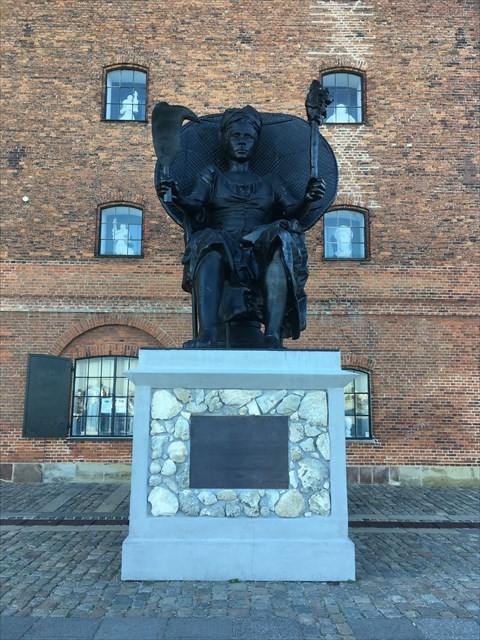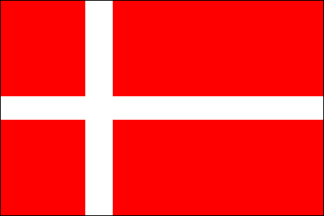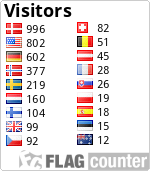

Dansk:
Denne cache er en Earthcache, og der er ikke en fysisk cache, som skal findes, men for at logge cachen som fundet, skal du undersøge nogle ting på stedet og først svare på spørgsmålene, hvorefter du umiddelbart efter kan logge cachen som fundet. Er der problemer med besvarelsen eller forkerte ting vil du blive kontaktet af cacheejer.
Denne Earthcache viser den nære forbindelse med det biologiske (dyr), der omdannes til de geologiske fremkomster (sten). Med de menneskeskabte klimaforandringer er der nu særlig fokus på koralrevenes betydning, og de bruges til at måle forandringerne, fordi få graders varme påvirker koralerne, som er mikroskopiske dyr, så de levende koraller bleges og senere dør. Det er dyrenes skeletter, der danner koral stenene. De seneste undersøgelser viser, at ved de store tektoniske plader, virker den sammentrykte koralsten som en slags olie, der får pladerne til lettere at glide mod hinanden, og derfor bliver jordrystelserne mindre.
Koraller er et eksempel på, hvordan klimaforandringerne hurtigt får indflydelse på geologien.
Der findes blødkoraller og stenkoraller. Det er stenkorallernes skelletter, der danner koralrevene. Revene er dannet ved sedimentering.
Koralrev betegnes fagligt som biohermer og viser netop forbindelsen med det biologiske der forandres til rev. Koralrev findes fra Nordpolen til Sydpolen. Se kortet, hvor koralrevene er indtegnet med rødt.
Danmark var et stort og omfangsrigt land og har derfor været vært for de to typer koraller, som har sin udbredelse her.
Varmtvands koraler i vores tidligere koloni, De dansk Vestindiske øer.
Koldtvands koraler i Atlanterhavet ved Færøerne.
Sedimentering er den proces, hvor partikler opslemmes af fast stof i en væske grundet stoffernes bevægelse. Det faste stof, der ikke er opløseligt i vandet, sætter sig på en overflade og forlader væsken. Koralrev er undersøiske strukturer dannet af kalciumkarbonat udskilt af koraller. Koraller er kolonier af mikroskopiske levende dyr, som findes i havvand, der indeholder næringsstoffer. Koralrevene i verden indeholder mere end 25 procent af alle de kendte fiskearter i havene. De er et af de mest komplekse økosystemer på planeten og er hjem for mere end 4.000 forskellige typer fisk, 700 forskellige typer koraller og tusindvis af andre planter og dyr. Koralrev betegnes fagligt som biohermer (bio = liv og hermer = rev.)
Calciumcarbonat CaCO3, er den kemiske betegnelse for en gruppe mineralske stoffer. De omtales som marmor (metamorf bjergart), kalksten (sedimentær bjergart), dolomit (CaMg(CO3)2), kridt eller jordbrugskalk.
Kulsyrens særlige ioniseringsforhold medfører, at alle carbonater har basevirkning i vandig opløsning og under fri luftadgang. Derfor bruges Calciumcarbonat som jordforbedringsmiddel overalt, hvor man ønsker at fjerne syre fra jorden.
Havlevende dyr og planter danner skaller, exoskeletter og andre hårde dele af calciumcarbonat, men med havenes forsuring ændres de havlevende dyrs og planters evne til at danne og bevare de hårde dele af calciumcarbonat. Siden starten af industrialiseringen har havenes pH, surhedsgrad, ændret sig drastisk. Dyr og planter der er berørt af forsuringen er kalkflagellater, koraller, foraminiferer, pighuder, krebsdyr og bløddyr.
Koraller er dyr og ikke sten eller planter. Det er tusindvis af mikroskopiske polypdyr i familie med søanemoner og de lever i store kolonier. Der findes blødkoraller og stenkoraller. Det er stenkorallernes skelletter, der danner koralrevene. Koralrevene fylder 0,1% af havene, og 25% af alle fiskene lever ved koralrevene.
Varmtvands koraller
Når korallerne er levende, lever de af mikroskopiske alger, der sidder på dem. Algerne lever af sollys og danner sukker til korallerne. Derfor kan de tropiske koraller ikke leve mere end 50 meter under havets overflade. De får deres farve fra algernes pigmenter.
Koraller er meget følsomme og derfor er de et mål for de menneskeskabte klimaændringer, der får havtemperaturen til at stige. Blot få graders forandring influerer på dem.
Koldvands koraller:
I det nordlige Atlanterhav ud for Færøerne er der store områder med koraller på meget dybt vand. Korallerne vokser typisk på 200-400 m dybde, men kan findes helt ned til 1400 meters dybde og enkelte steder er de fundet på 4.000 m dybde. Revene er næsten udelukkende dannet af Øjekorallen og den har brug for konstant strømmende vand, med en vis saltholdighed og temperaturer omkring 4-8˚C året rundt, for at trives. Korallerne kan blive meget store, ofte 4 meter høje og op til 10 meter.
Der hvor der sker store forandringer, er en anden del af Danmark, Grønland, hvor indlandsisen smelter i højere grad. Havene forsures som følge af udledningen af kuldioxyd, og det gør at korallerne bleges og efterhånden dør. Ud over klimaændringerne, ødelægges koralrevene af fysiske ting som trawlernes net samt plastic affald. Verden er blevet mindre, og vi kan i dag bedre gennemskue følgerne af klimaforandringer, og isens smeltning på Grønland får indflydelse også på vores kyster.
Queen Mary.
Statuen er placeret udenfor Den kongelige Afstøbningssamling.
Selve statuen er taget ind, fordi den gik i stykker. Måske bliver den repareret eller bliver erstattet af en metal skulptur.
Soklen til statuen ”I am Queen Mary” er fremstillet af koraler, der er skåret ud af fundamenterne på huse på de Dansk Vestindiske Øer, som var vores kolonier, og koralerne er hentet fra de omgivende koralrev.
Selve statuen er lavet af Flamingo, som er opskummet polystyren, som er en polymer med 98% luft. Overfladen er behandlet med sort materiale for at beskytte mod vejrliget. Statuen vil om muligt blive erstattet af en bronzeskulptur.
Figuren viser Mary Thomas, som var den ledende modstander af slaveriet i Caribien for retten til frihed og statuen blev opført i 2018 for at mindes 100 året for salget af Dansk Vestindien til USA og slaveriets ophør, og det er den første statue i Danmark af en sort person.
Skulpturen er udformet af danske Jeannette Ehlers og La Vaughn Belle fra Jomfruøerne.
For at logge cachen som fundet, skal du undersøge nogle ting ved korallerne og svare på spørgsmålene:
1. Beskriv en sten med størrelse, struktur, materiale og farve. Hvad tror du at stenene består af og hvordan mener du, at de er de opstået?
2. Beskriv specielt stenens mønster. Hvorfor tror du, at den får et specielt mønster?
3. Er stenene dannet af koldtvands eller varmtvands koraller?
4. I loggen bedes du tage et billede af dig eller af et stykke papir med dit Geo-navn foran skulpturen. Eller du kan sammen med svarene sende et billede af den sten, du beskriver. Det er en stor glæde for mig at modtage de mange fine logninger og de tilsendte beskrivelser af stenene og evt. modtagelsen af FP.


English:
This cache is an Earthcache, and there is not a physical cache to be found, but to log the cache as found, examine some things on the spot and answer the questions and then you can immediately log the cache as found. If there are problems with the answer or wrong things you will be contacted by the cache owner.
This Earthcache shows the close connection with the biological (animal) that is transformed into the geological emergencies (stones). With the anthropogenic climate changes, there is now a particular focus on the importance of coral reefs, and they are used to measure the changes, because few degrees of heat affect the corals, which are microscopic animals, so that the living corals are bleached and later die. It is the animals' skeletons that form the coral stones. The latest studies show that at the large tectonic plates, the compressed coral stone acts as a kind of oil that makes the plates easier to slide against each other, and therefore the earthquakes become smaller.
Corals are an example of how climate change quickly affects geology.
There are soft corals and stone corals. It is the stone corals' skeletons that form the coral reefs. The reefs are formed by sedimentation.
Coral reefs are termed academically as biohermer and show the connection with the biological that changes to reef. Coral reefs are found from the North Pole to the South Pole. See the map where the coral reefs are red.
Denmark was a large country and has therefore hosted the two types of corals that have their spread here.
Hot water corals in our former colony, The Danish West Indies.
Cold water corals in the Faroe Islands in the Atlantic Ocean.
Sedimentation is the process by which particles are slurried by solid in a liquid due to the movement of the substances. The solid that is not soluble in the water settles on a surface and leaves the liquid. Coral reefs are subsea structures formed from calcium carbonate separated by corals. Corals are colonies of microscopic live animals found in seawater containing nutrients. The coral reefs in the world contain more than 25 percent of all known species in the oceans. They are one of the most complex ecosystems on the planet and are home to more than 4,000 different types of fish, 700 different types of corals and thousands of other plants and animals. Coral reefs are termed academically as biohermers (bio = life and herm = rev.)
Calcium carbonate CaCO 3 is the chemical name for a group of mineral substances. They are referred to as marble (metamorphic rock), limestone (sedimentary rock), dolomite ( CaMg (CO 3 ) 2 ), chalk or agricultural lime.
The particular ionization conditions of the carbonic acid mean that all carbonates have base action in aqueous solution and under free air access. Therefore, Calcium carbonate is used as soil improver wherever you want to remove acid from the soil.
Sea animals and plants form shells, exoskeletons and other hard parts of calcium carbonate, but with the acidification of the oceans, the ability of the marine animals and plants to form and maintain the hard parts of calcium carbonate changes. Since the beginning of industrialization, the pH of the oceans has changed drastically. Animals and plants affected by the acidification are lime flagellates, coral, foraminifera, echinoderms, crustaceans and molluscs.
Corals are thousands of microscopic polyps in the family with sea anemones and they live in large colonies. There are soft corals and stone corals. It is the stone corals' skeletons that form the coral reefs. Coral reefs occupy 0.1% of the oceans, and 25% of all fish lives at the coral reefs.
Hot water coral
When the corals are alive, they live by microscopic algae that sit on them. The algae lives by sunlight and form sugar for the corals. Therefore, the tropical corals cannot live more than 50 meters below sea level. They get their color from the algal pigments.
Corals are very sensitive and therefore they are a measure of the people-made climate changes that increase the sea temperature. Only a few degree changes affect them.
Cold water corals:
In the North Atlantic off the Faroe Islands there are large areas of coral in very deep water.The corals typically grow at 200-400 m depth, but can be found down to 1400 meters depth and in some places they are found at 4,000 m depth. The reefs are almost exclusively formed by the eye coral and it needs constant flowing water, with some salinity and temperatures around 4-8˚C year-round to thrive. The corals can become very large, often 4 meters high and up to 10 meters.
Where major changes occur in another part of Denmark, Greenland, is the ice melting. The oceans are acidified as a result of the emission of carbon dioxide, which causes the corals to bleach and eventually die. In addition to climate change, the coral reefs are destroyed by physical things such as trawlers' nets and plastic waste. The world has become smaller, and today we can better understand the consequences of climate change, and the ice's melting in Greenland also affects our coasts.
Queen Mary.
The statue is located outside the Royal Casting Collection. The statue is moved now for repairing or made of bronze.
The base of the statue "I am Queen Mary" is made of corals cut from the foundations of houses of the Danish West Indies, which were our colonies, and the corals are taken from the surrounding coral reefs.
The statue itself is made of Flamingo, which is foamed polystyrene, which is a polymer with 98% air. The surface is treated with black material to protect against the weather. If possible, the statue will be replaced by a bronze sculpture.
The figure shows Mary Thomas, who was the leading opponent of slavery in the Caribbean for the right to liberty and the statue was built in 2018 to commemorate the 100th anniversary of the sale of the Danish West Indies to the United States and the end of slavery, and this is the first statue in Denmark of a black person.
The sculpture is designed by Danish Jeannette Ehlers and La Vaughn Belle from the Virgin Islands.
To log the cache as found, examine some things about the corals and answer the questions:
1. Describe a stone with size, structure, material and color. What do you think the stones consist of and how do you think they originated?
2. Describe in particular the stone pattern. Why do you think it will have a special pattern?
3. Are the stones here formed by cold water or hot water corals?
4. In the log, please take a picture of yourself or a piece of paper with your nickname in front of the sculpture. Or you can send by the answers a photo of the stone that you describe. I am very happy to receive the many fine describtions and answers of the stones, and of course the FP.

| I have earned GSA's highest level: |
 |